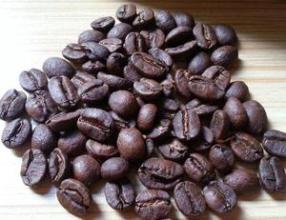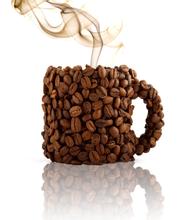Coffee fine grinding scale thickness difference how to adjust the coffee machine
Coffee fine grinding scale thickness difference how to adjust the coffee machine
The reason is very simple, fine grind coffee powder surface area is larger, extract more ingredients, the more ingredients soluble in water, the more liquid, the stronger the bitterness. On the contrary, the rough ground coffee powder has a small surface area and less extracted powder. of course, the concentration will be lower and the bitterness will be weaker. If the bitter taste is weak, the sour taste will become stronger instead.
Compared with Article 1 of this basic Law, if coffee powder with different grinding degrees is mixed together, the concentration of soluble powder will be different, and both sour and bitter taste will be extracted. It is conceivable that this cup of coffee will turn into a muddy and smelly liquid.
The second is the problem of friction heat generated by the bean grinder. It is normal to produce heat during grinding. The reason to pay attention to this is because heat obviously harms taste and aroma. This is the price difference between the bean grinder with metal blade and the bean mill with ceramic blade. After many international studies, experts believe that under very common speed and load conditions, the instantaneous high temperature caused by friction in the local area of the metal surface can be as high as 500-1000 ℃.
Therefore, it is inevitable that ground coffee will produce heat, but the heat will vary according to the mechanism of grinding beans. Bean grinders grind coffee beans in two ways: one is to grind coffee beans with two grinding plates engraved with shallow grooves, which we call parallel grinders, and most manual bean grinders fall into this category. The other is represented by the shredder, and the coffee beans are cut by two sets of rollers with sharp blades that bite perpendicular to each other, which is the so-called tapered blade grinder.
It is generally believed that slow grinding with a manual parallel bean grinder will not produce heat, in fact, on the contrary, the type of friction with a disc blade is easy to produce heat. On the other hand, the tapered bean grinder can minimize the friction heat produced by grinding coffee powder. The reason is that the tapered blade is ground quickly with a longer blade process, and the tapered blade takes less time and has a lower heating rate at the same thickness.
Third, the skill of not producing fine powder.
Fine powder will make the coffee liquid turbid, but also bring uncomfortable bitterness and astringency. The most common disadvantage of fine powder is that the fine powder with high temperature and electricity is directly attached to the inside of the bean grinder and mixed into the new coffee during the next grinding.
The trick of not producing fine powder is to choose a bean grinder that will not produce fine powder as much as possible, or to clean it in time after each use. The hand-operated ceramic blade bean grinder can be washed directly, and if it is an electric mill, the fine powder attached to it can be carefully removed with a brush. In short, cleaning the bean grinder is the first action that must be done.

Important Notice :
前街咖啡 FrontStreet Coffee has moved to new addredd:
FrontStreet Coffee Address: 315,Donghua East Road,GuangZhou
Tel:020 38364473
- Prev

Special Coffee Classification system-China Special Coffee Association
Introduction to the flavor and taste of coffee bourbon species: characteristics: medium-high appearance, low fruit yield, green top leaves, excellent acidity and poor virulence. El Salvador bourbon: Kaddura Kaddura, a green-topped dwarf discovered in Brazil in 1935, has obvious waxy leaves, short internodes, clusters of fruit and 200kg higher yield than bourbon. In one fell swoop to replace Tibica and
- Next

Jasmine fragrant coffee bean flavor description treatment quality characteristics of taste manor introduction
Jasmine Flavor Coffee Bean Flavor description treatment quality characteristics the manor introduces that the coffee fruit contains two seeds, namely coffee beans. The two beans are connected face to face with each other on one side of the plane. Each coffee bean has a thin outer film, which is called silver skin, and its outer layer is covered with a yellow outer skin, called endocarp. The whole coffee beans are wrapped.
Related
- Guji coffee producing area of Guji, Ethiopia: Humbela, Shakiso, Wulaga
- What is the most expensive variety of Qiloso in BOP multi-variety group?
- How to store the coffee beans bought home?
- Why are Yemeni coffee beans so rare now?
- Ethiopian Sidamo all Red Fruit Sun Sun Santa Vini Coffee beans
- SOE is mostly sour? What does it mean? Is it a single bean? what's the difference between it and Italian blending?
- Is Italian coffee beans suitable for making hand-brewed coffee?
- How to choose coffee beans when making cold coffee? What kind of coffee beans are suitable for making cold coffee?
- Just entered the pit to make coffee, what kind of coffee beans should be chosen?
- Can only Japan buy real Blue Mountain Coffee? What are authentic Jamaican Blue Mountain coffee beans?

